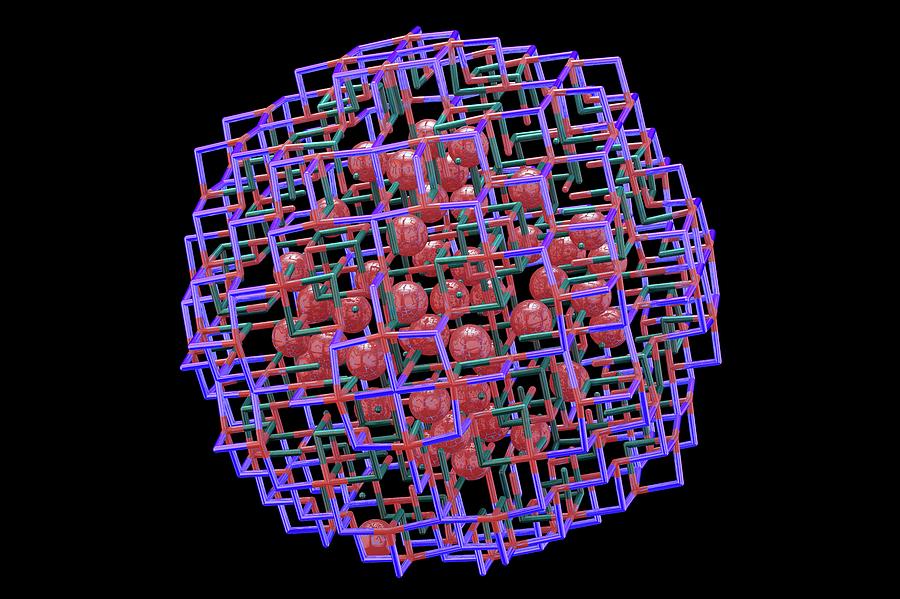Quantum Dots – Emerging Perspectives and Applications
Quantum Dots(QDs) are a class of material whose size ranges from 2-10 nanometres of synthetic crystals possessing zero-dimension, and these are able to display characteristic electronic and optical properties. This was first discovered by Russian scientist Alexey Ekimov in 1981.
Difference between QDs and bulk materials
QDs differ from bulk materials based on their size-dependent energy band gap. In bulk materials, the band gap is a property of the material itself and does not change with size. The band gap is inversely proportional to the size of the QD. The magnitude of quantum dots (QDs) is crucial as it dictates the intensity of the quantum confinement phenomenon. Diminutive QDs display more potent quantum confinement, resulting in elevated energy levels compared to their larger counterparts. Regulating QD size during the growth process plays a pivotal role in progressing and innovating devices, contributing to diverse applications. This size-dependent band gap leads to a broad range of optical properties, including tunable absorption and emission spectra, etc.
Type of QDs and Characteristics
Based on their chemical composition and architecture QDs can be categorized into various types such as core type, core-shell, and alloyed quantum dots. These QDs have the ability to emit a wide spectrum of wavelength (light) under UV radiations. When QDs are irradiated considerable number of electrons have energized and ejected from their atoms facilitating the formation of a conduction band where electrons are allowed to move throughout that material. If these electrons back to the valence band they emit light, and the wavelength of light depends on the energy gap between the valence band and conduction band.
The semiconducting nature of QDs is attributed to electrons confinement in all three spatial dimensions which make them behave like single quantum particles though they contain thousands of atoms. This property of QDs facilitates the development of transistors, solar cells and, thermo-electric devices.
Preparation and Applications
Depending upon the nature of raw materials chosen for the synthesis of QDs, either top-down or bottom-up methods are employed. The high extinction coefficient of QDs offers extraordinary optical behaviors to make solid-state lighting, photo-detectors, light-emitting diodes (LEDs), display devices, fluorescent biological labeling, composites, and medical imaging. In addition, it can also be used in drug delivery, cancer therapy, and targeted molecular therapy.
Display devices
Quantum dots (QDs) find application in the construction of light-emitting tools, and furthermore, they contribute to boosting the efficacy of light-emitting diodes (LEDs), giving rise to the innovative concept of “Quantum Dot light Emitting Diode.” These QD-based LEDs showcase notably improved and precise color representation. A demonstrative illustration of a QDs display was effectively demonstrated years ago from a technical standpoint, demonstrating commendable performance with vibrant emission across the visible and near-infrared spectrum. Compared to conventional displays, modern displays offer higher contrast ratios, and brightness, consume less power, have higher resolutions, highly immersive high-dynamic range (HDR) experience. Hence, QDs are being increasingly used in display devices. QDs’ narrow emission spectra and wide excitation profiles make it more efficient to convert light into any color within the visible spectrum.
Biomedical Application
High luminescence, narrow emission, low toxicity (depending on the elemental composition), and biocompatibility of QDs make them a perfect candidate for bio-imaging, diagnostics, and bio-sensing applications. For instance, fibrous phosphorus QDs were demonstrated as fluorescent labels for human adenocarcinoma bioimaging, CuInS2/ZnS QDs, with low nonspecific binding and possible bio-conjugation, were demonstrated as markers for cell imaging. In addition, QDs have multiple attractive features in drug delivery systems including their ease of fabrication, capability of conjugation to a wide variety of drugs, tuned physico-chemical properties, and interesting optical properties making them traceable drug carriers that can be easily monitored after administration into the human body.
Health Hazards and Safety Aspect
Furthermore, the small size of quantum dots raises concerns about their ability to penetrate human cells. The nanoscale dimensions of these particles enable them to interact with biological systems at the cellular level. While this property is advantageous for applications like targeted drug delivery and cellular imaging, it also necessitates a thorough understanding of their potential impact on human health
In the context of occupational exposure, individuals involved in the handling and manufacturing of synthetic quantum dots may face increased risks. Proper safety measures, including the use of personal protective equipment and adherence to established protocols, are crucial to minimize the likelihood of adverse health effects.
Source
- https://www.nanowerk.com/what_are_quantum_dots.php
- https://www.sigmaaldrich.com/IN/en/technical-documents/technical-article/materials-science-and-engineering/biosensors-and-imaging/quantum-dots
- https://www.jstor.org/stable/2889983
- https://pubmed.ncbi.nlm.nih.gov/32171116/

